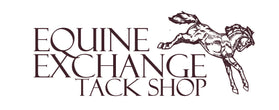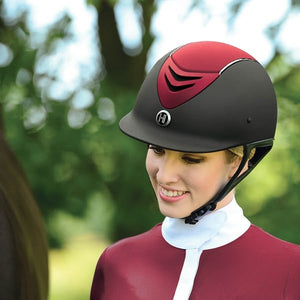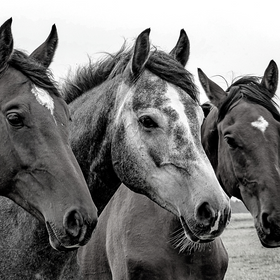
Choke in Horses
Choke is a condition in horses that occurs when food or another material becomes lodged in the esophagus, making it difficult or impossible for the horse to swallow. While this condition may sound similar to choking in humans, it's important to note that a horse with choke is still able to breathe since the obstruction is in the esophagus and not the airway. However, it is a serious condition that requires prompt attention.
Choke is often caused by:
-
Poorly Chewed Feed: Horses that eat too quickly or those with dental issues may not chew their feed thoroughly, leading to larger pieces of food becoming lodged in the esophagus.
-
Dry or Coarse Feed: Pelleted feeds, hay cubes, or beet pulp that has not been properly moistened can expand in the esophagus, causing a blockage.
-
Dehydration: Horses that are not adequately hydrated may have difficulty swallowing dry feed.
-
Underlying Health Issues: Conditions such as esophageal scarring, stricture, or nerve damage can predispose a horse to choke.
-
Behavioral Factors: Horses that bolt their feed due to competition for food or anxiety are at higher risk.
Horses experiencing choke may exhibit the following symptoms:
- Drooling or excessive salivation
- Coughing or gagging
- Extending the neck and head in an attempt to clear the blockage
- Nasal discharge, often containing food or saliva
- Difficulty swallowing or complete refusal to eat
- Signs of discomfort or distress, such as pawing at the ground or restlessness
In severe or prolonged cases, choke can lead to complications such as esophageal damage, aspiration pneumonia (if food enters the lungs), or dehydration.
If you suspect your horse is choking, take the following steps:
-
Remove Access to Food and Water: Prevent the horse from eating or drinking, as this could worsen the blockage.
-
Call Your Veterinarian: Choke often requires veterinary intervention. Do not attempt to force-feed water or food, and avoid inserting objects into the horse's mouth or throat as this could cause injury.
-
Monitor the Horse: Keep the horse quiet and observe its behavior while waiting for the veterinarian. Note any nasal discharge or worsening symptoms to report to the vet.
There are several steps you can take to reduce the risk of choke:
-
Slow Down Feeding: Use a slow feeder or place large, smooth rocks in the feed bucket to encourage the horse to eat more slowly.
-
Soak Feed: Moisten pelleted feeds, hay cubes, and beet pulp before feeding to prevent them from expanding in the esophagus.
-
Regular Dental Care: Ensure your horse receives routine dental checkups and floating to address any sharp points or other dental issues that might hinder proper chewing.
-
Provide Adequate Water: Always ensure your horse has access to clean, fresh water to aid in swallowing and digestion.
-
Manage Feeding Behavior: Feed horses individually if competition for food causes them to bolt their feed. Spreading out meals or providing smaller, more frequent meals can also help.
While some mild cases of choke resolve on their own, prolonged or recurrent choke episodes are emergencies. If your horse’s symptoms do not improve within 30 minutes or if they seem to worsen, contact your veterinarian immediately. Additionally, seek veterinary attention if your horse shows signs of respiratory distress, fever, or lethargy, as these could indicate complications.
Final Thoughts
Choke is a preventable condition that can lead to serious complications if left untreated. By understanding its causes, recognizing the symptoms, and taking preventive measures, horse owners can significantly reduce the risk of choke and ensure their horses remain healthy and comfortable. As always, when in doubt, consult with your veterinarian to address any concerns about your horse’s feeding habits or overall health.





